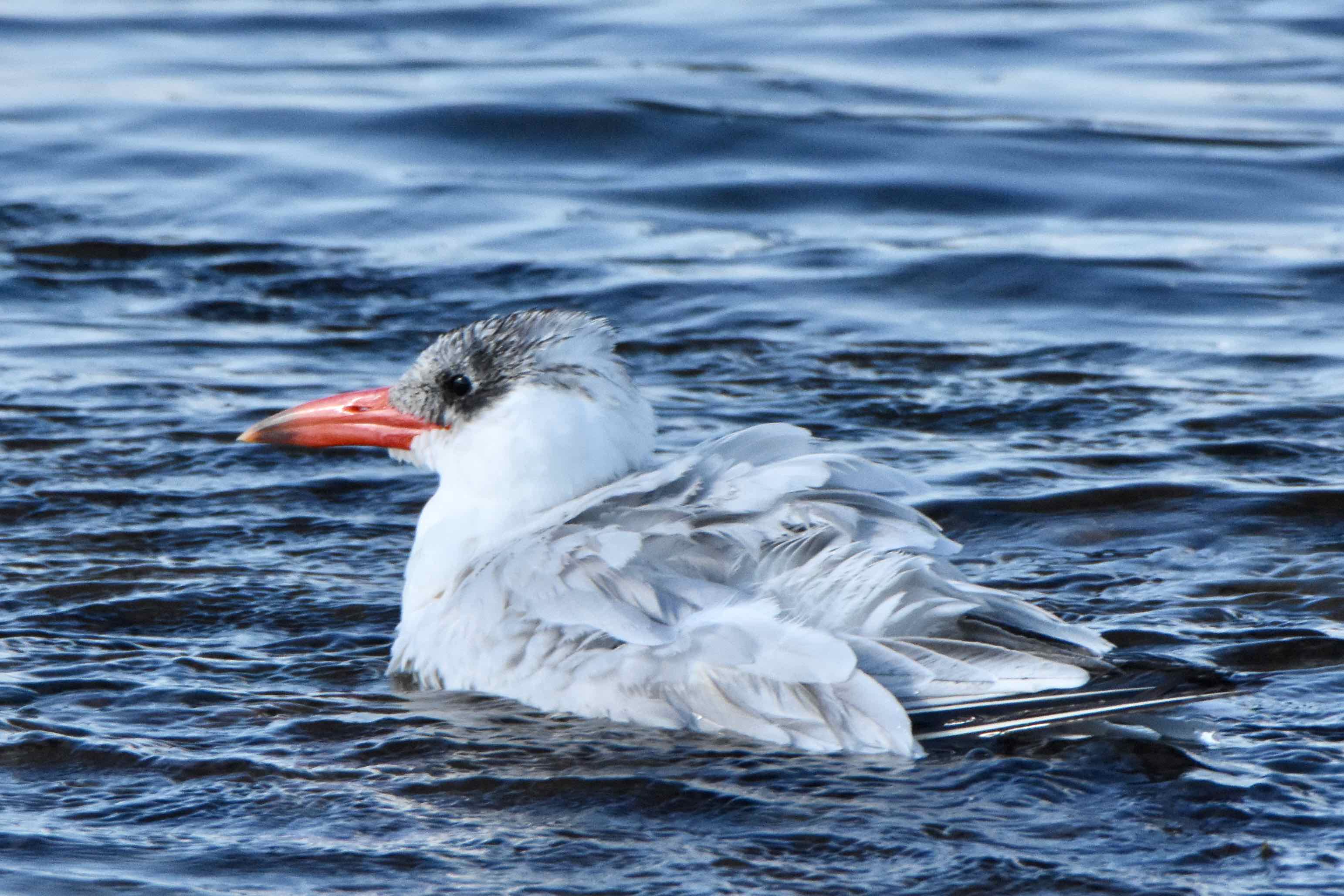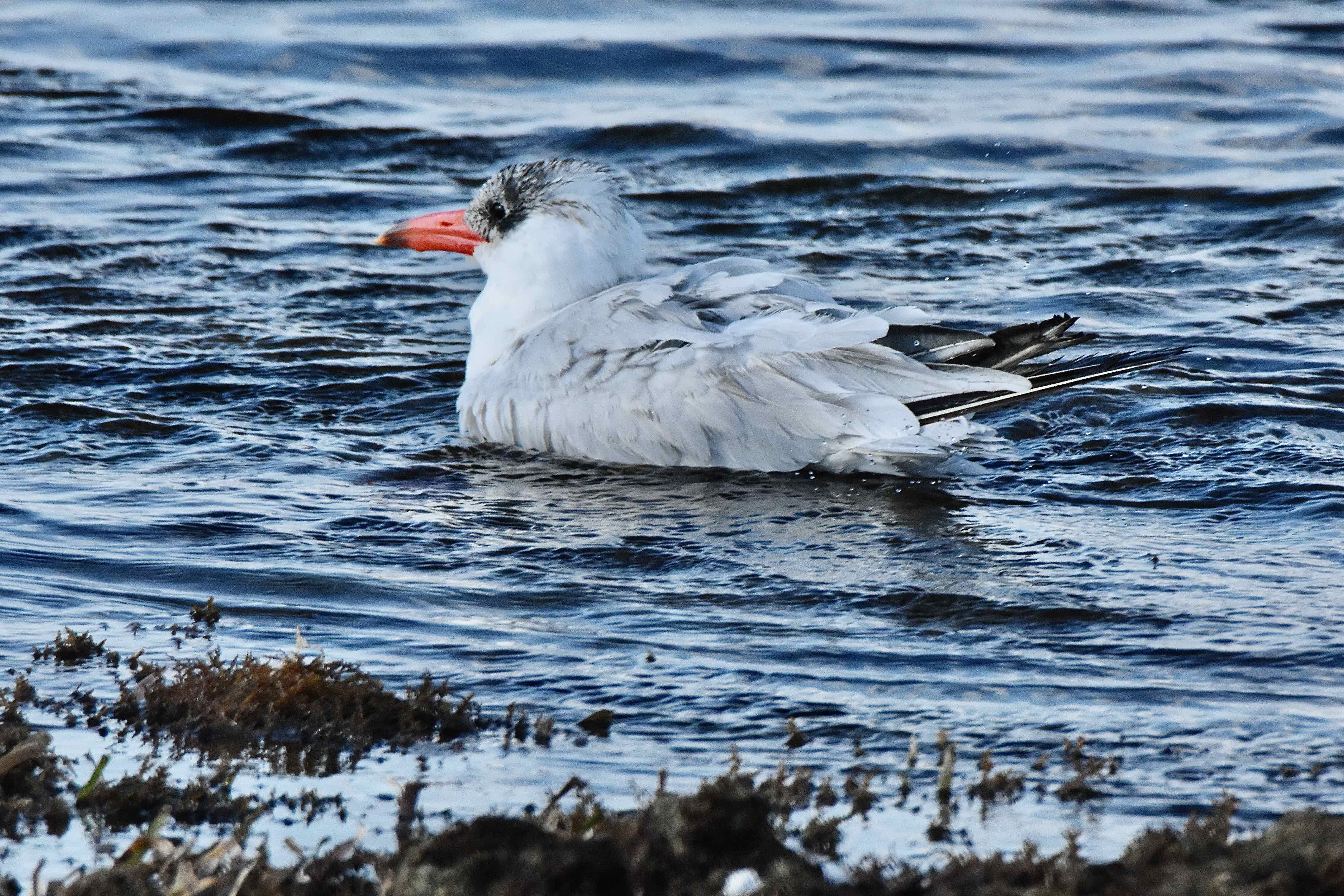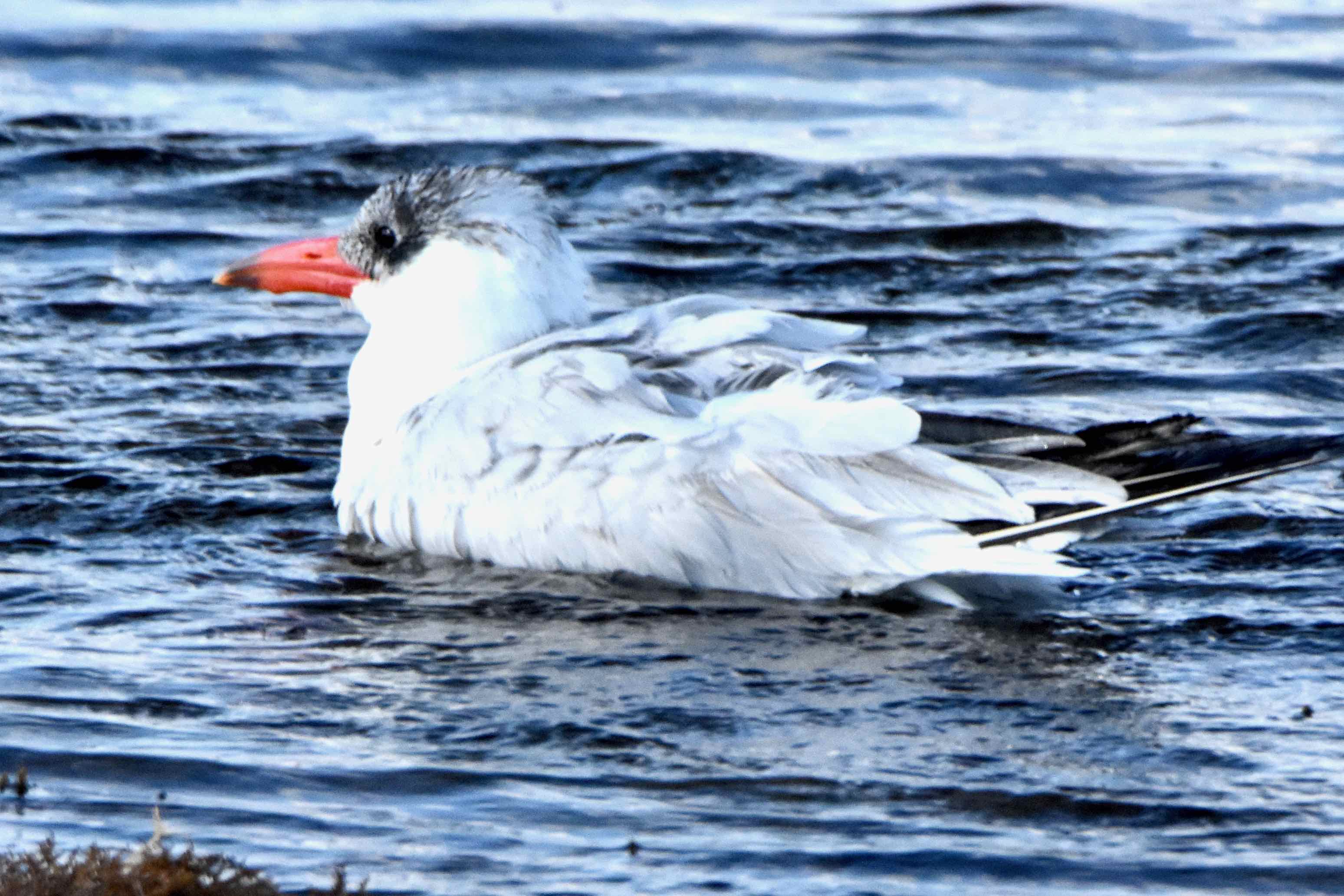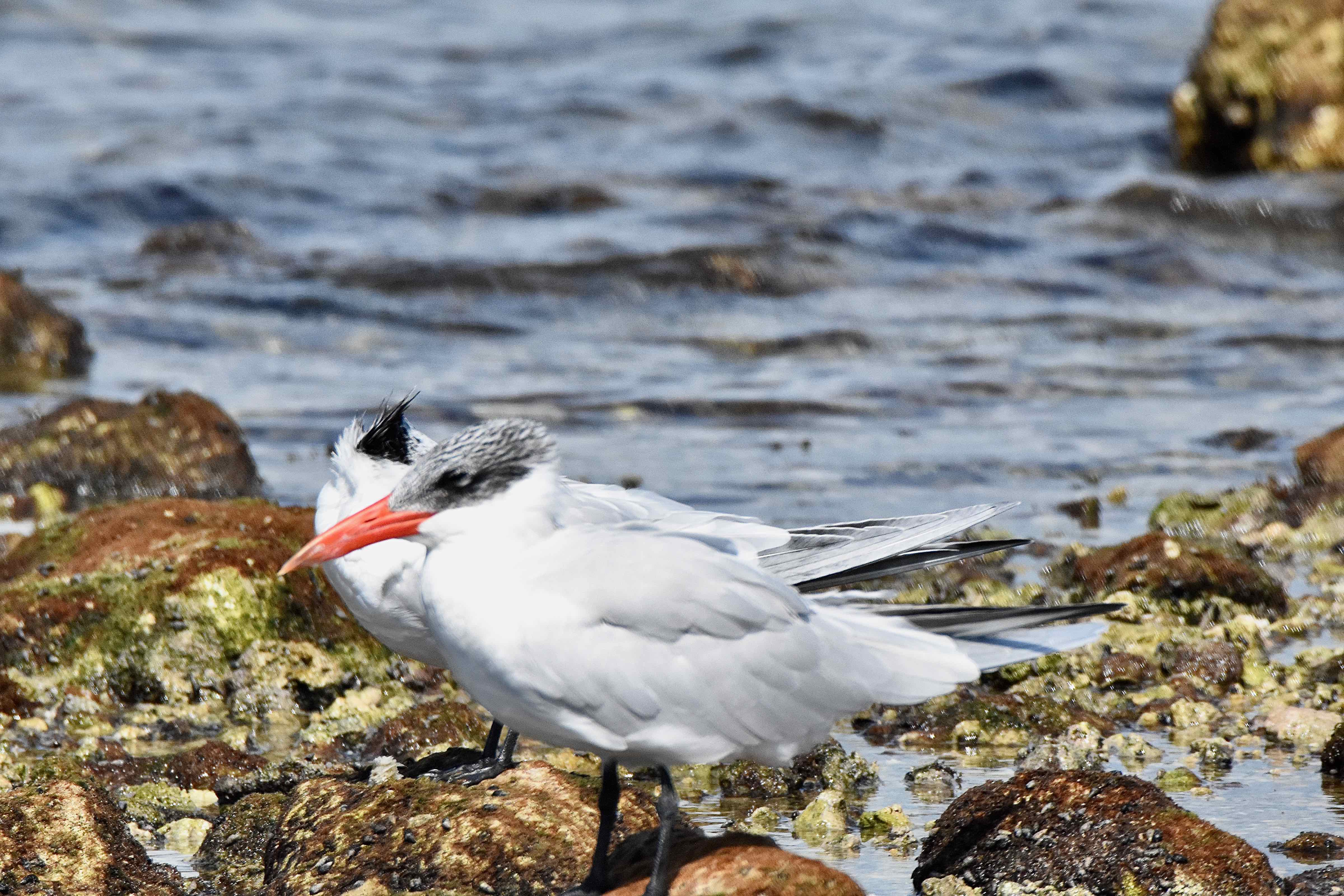
Caspian tern, photographed at Biscayne National Park, Homestead, Miami-Dade County, in February 2017.
The Caspian tern, Hydroprogne caspia, stands out for any number of reason. For one, it is the world's largest tern. For another, its range is literally global, nesting on every continent save Antarctica.
In Florida, it's mostly seen as a migratory bird during the cooler months of the year. But it does have a tiny nesting foothold in Tampa Bay. More on that in a bit. It is big, bigger than some gulls, in fact, with a body length of two feet and a wingspan that approaches five feet. Its bill is distinctively thick, bright orange but dark at the tip. It sports a black skull "cap," like terns generally have during the summer breeding season, but instead of receding in winter like other terns, the cap takes on a salt-and-pepper look.
Caspian terns are, as noted, found around the globe, nesting on five continents. Its name, in fact, is a reference to Russia's Caspian Sea. In parts of the world, their numbers have declined significantly, but in North America, they've been on the rise, generally. They have a scattered nesting range; researchers at the University of Minnesota identified five distinct regions: the Pacific Coast into the Rocky Mountains, central Canada, the Great Lakes, the Atlantic Coast from North Carolina into Labrador and the Gulf Coast from Florida to Texas.
According to a Florida Fish and Wildlife Conservation Commission report done in 2003, there is only one nesting site in the Sunshine State, and that happens to be a human-made island in Tampa Bay. There have been sites in Franklin, Pinellas, Brevard and Charlotte counties, but they are no more. The Tampa Bay site persists, and because of that singular site, Caspian terns are considered a species of special concern in Florida. Still, they are commonly seen throughout most of Florida during the cooler months. That one nest site in Tampa, however, is part of a significant change in the habits of this bird.
Caspian terns once nested on freshwater lakes and marshes throughout much of the United States. As agriculture and development altered the landscape, the terns turned more to coastal sites, nesting on artificial islands like the one in Tampa Bay. They've also pushed their range northward well into Alaska.
As might be expected, fish is a big part of the Caspian tern's diet. They'll fly high, hover and dive-bomb into the water for small and medium size fish. They'll also pick off fish from the surface, take bugs on the fly and also will eat the eggs and young of other birds.
By and large, they are colonial nesters, but pairs will strike out on their own. They nest on the ground or on floating mats of dead plants, both males and females digging a shallow hole that might be lined with softer material. A clutch can have as many as five eggs but most likely fewer; they'll require about three weeks of incubation before hatching. Mom and dad split sitting duties. Both also feed their young, who will require a month to five weeks of care before fledging. They'll remain with their parents for as long as eight more months before striking out on their own. The mortality rate for young Caspians is quite high; in some regions, two-thirds of them will die before reaching full maturity at three. If they do make it that far, chances are good for a long life well into their 20s.
Like several other tern species, Caspian terns were once classified as members of the genus Sterna, under the name Sterna caspia. Caspians were reclassified as the sole member of the genus Hydroprogne based on DNA sequencing. The name is the combination of two words, hydros — Greek for water — and progne — Latin for swallow. They are members of Laridae, the family of gulls and terns.
Biscayne National Park



